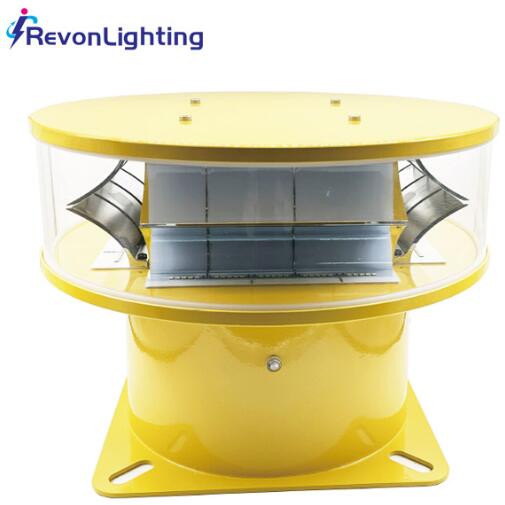Posted: 2024-12-25
In a world increasingly reliant on complex infrastructures and towering structures, the concept of light obstruction has gained critical importance. Whether in aviation, maritime navigation, or urban planning, addressing light obstruction ensures safety, prevents accidents, and enhances visibility. As technology evolves, so does the need for innovative solutions to mitigate its risks.
What is Light Obstruction?
Light obstruction refers to the phenomenon where a structure, object, or natural element interferes with the transmission or reception of light, leading to reduced visibility or hazardous conditions. Common examples include tall buildings, wind turbines, bridges, and communication towers that may obscure critical light signals or create visual challenges for operators, pilots, or mariners.
| light obstruction | lighting obstruction |
The Importance of Managing Light Obstruction
Proper management of light obstruction is vital to maintaining safety across various sectors. In aviation, for instance, obstructed lighting on high-rise structures or communication towers can pose severe risks to aircraft during takeoff, landing, or low-altitude flights. Similarly, in maritime environments, light obstruction on navigational aids or lighthouses can lead to collisions or navigational errors.
Effective management not only minimizes safety risks but also ensures compliance with regulatory standards set by organizations such as the International Civil Aviation Organization (ICAO) or the International Maritime Organization (IMO).
Light Obstruction in Aviation
The aviation sector is particularly sensitive to light obstruction. Tall structures near airports, such as skyscrapers, antennas, or cranes, require proper marking and lighting to ensure they are visible to pilots both during the day and at night. Obstruction lighting systems, often equipped with high-intensity LEDs, are designed to mitigate these risks by making structures easily detectable from a distance.
Moreover, modern obstruction lighting systems are increasingly adopting smart technologies, such as radar-activated lights. These systems activate only when an aircraft approaches, reducing light pollution while maintaining safety.
Light Obstruction in Maritime Navigation
In the maritime domain, light obstruction can occur due to natural elements like fog, heavy rain, or physical obstructions such as bridges and offshore installations. For mariners, the ability to see and interpret navigational lights accurately is crucial for avoiding hazards and ensuring smooth operations.
To combat these challenges, marine navigation aids, such as buoys and lighthouses, are equipped with high-intensity lights that pierce through adverse weather conditions. Advances in LED technology have further enhanced the reliability and efficiency of these systems, reducing maintenance costs while improving performance.

Light Obstruction in Urban Environments
Urban development brings unique challenges related to light obstruction. Rapid construction of skyscrapers and urban infrastructure can block natural light or disrupt the visibility of important light signals, such as traffic lights or warning beacons. This can lead to accidents, inefficiencies, or discomfort for city dwellers.
Urban planners and architects must consider light obstruction during the design phase to ensure adequate light transmission and minimal disruption. Strategic placement of structures, reflective materials, and innovative lighting systems can help mitigate these effects while maintaining aesthetic appeal.
Technological Innovations Addressing Light Obstruction
The field of light obstruction management has seen significant advancements in recent years. Some notable innovations include:
Dynamic Obstruction Lighting: These systems adjust light intensity and patterns based on environmental conditions or proximity of vehicles or aircraft.
LED Obstruction Lights: Offering superior brightness, longevity, and energy efficiency, LED-based systems have become the industry standard for mitigating light obstruction.
Remote Monitoring and Control: Advanced obstruction lighting systems now incorporate remote monitoring capabilities, allowing operators to detect faults, adjust settings, and ensure compliance with regulations in real-time.
Solar-Powered Solutions: Solar-powered obstruction lights provide a sustainable alternative, particularly for remote or offshore installations, reducing reliance on external power sources.
Environmental Considerations
While addressing light obstruction is essential for safety, it is equally important to consider its environmental impact. Excessive artificial lighting can contribute to light pollution, affecting wildlife and ecosystems. Modern solutions focus on minimizing light spill and using eco-friendly materials to reduce their environmental footprint.
Radar-activated systems, for example, balance safety with sustainability by activating lights only when necessary. Additionally, many manufacturers are designing fixtures with precise beam control to limit light spread and prevent unnecessary illumination.
The Role of Regulations
Effective management of light obstruction is guided by stringent regulations and standards. In aviation, the ICAO mandates specific requirements for obstruction lighting, such as color, intensity, and placement. Similarly, maritime authorities enforce standards to ensure that navigational aids remain visible and effective under all conditions.
Compliance with these regulations not only enhances safety but also helps organizations avoid legal and financial penalties. Regular audits and inspections are essential to maintaining adherence and ensuring the continued reliability of obstruction lighting systems.
Light obstruction is a multifaceted challenge that spans industries and environments. From aviation and maritime navigation to urban planning, addressing this issue is critical for ensuring safety, enhancing visibility, and promoting sustainable practices. By leveraging technological advancements and adhering to regulatory standards, we can effectively mitigate the risks associated with light obstruction while paving the way for a safer and more efficient future.